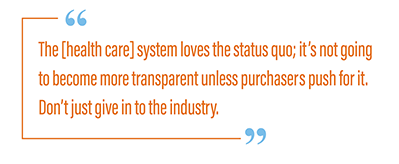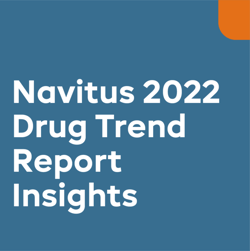Unable to attend our recent webinar? Here's a recap of what you missed!
We recently joined our client, Self-Insured Schools of California (SISC), on a webinar to share their story that demonstrated how a transparent pharmacy benefit manager (PBM) helped expose wasteful formulary drugs, and generated significant savings for both the plan and its members.
oVERVIEW OF pbm mODELS
To start things off, Byron Mickle, Senior Vice President of Sales & Marketing at Navitus, provided a high-level overview covering the PBM models, varying degrees and definitions of transparency across those models and how that can affect plan spend. Byron then explained why per member per month (PMPM) is the most important metric when comparing PBMs.
“PMPM factors in what drugs you have on your formulary, what utilization management criteria you have, the discounts with pharmacies and the rebates that are being generated from the drugs that are on your formulary. PMPM is a more accurate representation of what a client actually spends. Unfortunately, in our industry, so much of what gets represented and shown focuses more on discounts and rebates, whether it is with pharmacies or manufacturers, versus the dollars that it translates into.”
Better managing pharmacy benefit spend is a culmination of things that really boils down to answering one simple question: What are you actually spending for your pharmacy benefits?
oUT OF cONTROL pHARMACY tRENDS
John Stenerson, Deputy Executive Officer of SISC, a coalition of public schools that joined together to reduce costs and spread risk over a large population, started by sharing the following quote from a former Federal Trade Commission (FTC) lawyer:
“Few markets are as concentrated, opaque and complex and subject to rampant, anti-competitive and deceptive conduct as the PBM market.” John said, “I like this quote because I agree with it, and I think that most people probably agree with it, too. It makes me feel better about the first 25 years or so that I was with SISC where I was lost; we were trying all sorts of different things and nothing ever really seemed to work.”
SISC was paying a lot of money for drugs that were providing very little clinical value. Over the years, the plan made many changes in an attempt to better manage pharmacy costs. However, despite all their efforts, pharmacy spend was still out of control. Its pharmacy trend was increasing an average of 11.7% over a four-year period. That’s when SISC decided to reassess its pharmacy benefit program.
On the surface, the pricing calculations between the traditional PBM model and pass-through model showed similar bottom line pricing. However, a deeper dive into the calculations revealed that the traditional PBM was actually generating ten times more PBM revenue once the income on spread pricing was added in. SISC ultimately decided to switch to Navitus because it offered true transparency and real savings.
John explained that, while it would have been easy to stay with the traditional PBM and not make any changes, SISC needed to have the will to make the change.
 KEY POINT: Don’t focus on spreadsheets that compare PBM discounts and rebates on a recent bucket of drugs. PBMs that sell their ability to provide significantly deeper discounts and bigger rebates than their competitors are using smoke and mirrors.
KEY POINT: Don’t focus on spreadsheets that compare PBM discounts and rebates on a recent bucket of drugs. PBMs that sell their ability to provide significantly deeper discounts and bigger rebates than their competitors are using smoke and mirrors.
aCTIVELY mANAGING THE pHARMACY bENEFIT
To keep access to quality health care affordable, SISC continued to actively manage the pharmacy benefit by collaborating with its consultant and Navitus to identify areas where waste was occurring, and make formulary changes that improved plan performance. SISC discovered that making formulary changes with a focus on enhancing rebates was not the answer. Instead, its pharmacy benefit strategy concentrated on emphasizing the lowest-net-cost drugs, not the highest-rebated drugs.
SISC implemented comprehensive step therapy and prior authorization programs that supported the lowest-net-cost approach, and removed over 600 drugs from its formulary that were wasteful and provided little value. Despite those changes, SISC didn’t experience much member disruption.
“We didn’t get a lot of negative feedback from members regarding drugs not being covered. We found that physicians were comfortable changing prescriptions to [align with] our formulary, since the drugs we covered were safe and just as effective as the ones that had been excluded.”
KEY POINT: Don’t let preconceived notions about member disruption get in the way of the pursuit of value.
Since making the switch to Navitus, SISC has found continued success with the transformative pass-through PBM approach, lowest-net-cost philosophy and outstanding clinical care model. Its pharmacy benefit trend remains significantly lower than the market and has been steady for the last six years, while the plan maintains strong benefits that allow members to continue to have affordable access to the therapies they need.
Are you interested in learning more strategies that could significantly reduce your pharmacy benefit costs? Watch the webinar on-demand to hear more!





